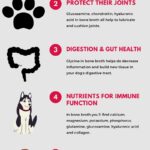Why Is My Dog Eating Carpet
Why Is My Dog Eating Carpet: Causes, Risks, and Solutions
If you’ve ever caught your dog chewing or swallowing bits of carpet, you may be wondering why this strange behavior is happening. While it may seem like a harmless quirk at first, carpet-eating can actually pose health risks to your furry friend and damage your home. In this article, we’ll explore the possible reasons behind your dog’s carpet obsession, the potential consequences, and some practical tips to prevent or stop this habit.
Causes of Carpet-Eating in Dogs
Dogs are curious creatures that explore their world through their senses, including taste and texture. Some dogs also have a natural urge to chew on objects as a way to relieve stress or boredom, or as part of their teething or oral fixation stage. However, when it comes to eating carpet specifically, there could be other factors at play. Here are some common causes of carpet-eating in dogs:
1. Nutritional Imbalance
Dogs need a balanced diet that provides all the essential nutrients for their growth, energy, and health. If your dog is not getting enough fiber or other nutrients from its food, it may seek out alternative sources of fiber or roughage, such as grass, leaves, or yes, carpet fibers. Similarly, if your dog is overeating or lacks proper hydration, it may feel hungry or thirsty and try to fill the void with non-food items.
2. Anxiety or Compulsion
Some dogs may eat carpet as a coping mechanism for anxiety or stress. This could be triggered by changes in their environment (such as moving to a new house), separation anxiety (when left alone), fear of loud noises (like fireworks), or even boredom (when not stimulated enough mentally or physically). In some cases, dogs may develop an obsessive-compulsive disorder (OCD) that drives them to perform repetitive behaviors like licking, biting, or eating things like carpet.
3. Medical Condition
In rare cases, dogs may eat carpet due to a medical condition that affects their digestion, metabolism, or neurological system. For instance, if your dog has an intestinal blockage or inflammation, it may crave soft materials like carpet to soothe its digestive tract. Similarly, if your dog has a brain tumor or injury that affects its behavior or perception, it may exhibit abnormal eating habits.
Risks of Carpet-Eating in Dogs
While some dogs may eat carpet and pass it through their system without any harm, others may suffer from various health problems related to this habit. Here are some risks of carpet-eating in dogs:
1. Choking or Blockage
Carpet fibers can be long and tangled, making them difficult to swallow or digest properly. If your dog chews on a piece of carpet that is too big or gets stuck in its throat or intestines, it may choke, gag, vomit, or have difficulty breathing. In severe cases, the blockage may require surgery to remove.
2. Intestinal Damage
If your dog ingests too much carpet or other non-food items, it may cause irritation or damage to its stomach lining or intestinal walls. This can lead to symptoms such as diarrhea, constipation, abdominal pain, bloating, flatulence, and even bleeding. In some cases, the damage may require medication or surgery to heal.
3. Poisoning
Some carpets contain toxic chemicals that can harm your dog if ingested. These chemicals may include flame retardants, formaldehyde, pesticides, and dyes. Symptoms of poisoning may vary depending on the type and amount of chemical ingested but could include vomiting, diarrhea, tremors, seizures, and even death.
Solutions for Carpet-Eating in Dogs
Now that you know why your dog might be eating carpet and what risks it poses, let’s look at some practical solutions to prevent or stop this habit. Here are some tips:
1. Provide a Balanced Diet
Make sure your dog is getting enough fiber and other nutrients from its food and water. You may want to consult with a veterinarian or nutritionist to determine the best diet for your dog based on its age, breed, size, and health condition.
2. Offer Safe Chew Toys
Provide your dog with safe and durable chew toys that satisfy its urge to chew without risking its health or damaging your home. Look for toys made of rubber, nylon, or natural materials like bones or antlers. Avoid toys that are too small, too hard, or can be easily swallowed.
3. Address Anxiety or Boredom
If your dog’s carpet-eating is caused by anxiety or boredom, try to identify the triggers and provide appropriate solutions. For instance, you could give your dog more exercise, playtime, mental stimulation (such as puzzle toys), or socialization. You could also use calming aids like pheromone sprays, music therapy, or medication (as prescribed by a vet).
4. Train a “Leave It” Command
Teach your dog a “leave it” command that interrupts its carpet-eating behavior and redirects it to a more positive activity. Start by placing a piece of carpet in front of your dog and saying “leave it” while offering a treat or toy as a reward for compliance. Repeat this training until your dog learns to associate the command with the desired response.
5. Supervise and Restrict Access
If all else fails, you may need to supervise your dog more closely when it’s near carpeted areas and restrict access to those areas when you’re not around. You could use baby gates, crates, or designated play areas to keep your dog safe and prevent further damage to your carpets.
Conclusion
Carpet-eating in dogs can be a puzzling and potentially dangerous behavior that requires attention and action from pet owners. By understanding the possible causes, risks, and solutions of this habit, you can help your dog stay healthy, happy, and carpet-free. Remember to consult with a veterinarian or behaviorist if you have any concerns or questions about your dog’s eating habits or overall health. And don’t forget to vacuum regularly!



